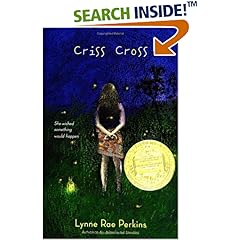I started this book, didn't think I'd like it, and put it down. Then, in about a month, I started it again. And, of course, I liked it. Because my first impressions of books are usually completely wrong.

I suppose you might say there are two main characters in this story. First, there's Debra (Debbie), an imaginative, wishful and thoughtful girl. Some of her favorite pastimes are helping elderly Mrs. Bruning around the house (and consequently meeting and falling for Mrs. Bruning's handsome grandson, Peter Bruning, later in the book), hanging out with her neighbourhood friends, and speculating over things (usually nothing at all).
Then, there's Hector, a slightly pudgy adolescent boy who sees a guitarist and is inspired to learn how to play. Taking lessons from a Presbyterian minister with a few others is how he meets a young girl named Meadow and develops a hopeless crush on her, hopeless because the striking, football-playing Dan Persik is interested in her as well.
Debbie loses her necklace, which is found by a few different people, all of whom make an effort to get it back to her, but in the end of the story...
Well, now you'll have to read it.
I really enjoyed this because of the different perspectives of all the different characters. The author didn't just stick to following Debbie and Hector around, but decided to bring their friends more into the story. Just the way the book was written was intriguing.
I liked this book, and I hope anyone who reads this review will want to read it as well.



2 comments:
Interesting to hear a young person's review. Thank you for sharing - I think this book will move up on my list!
Flusi
Thank you for your insights. I liked this book, too. There is such variety in the way the author tells the story, and it all underscores the term "criss cross" - coincidences, crossed paths, crossed wires, ships that pass in the night, etc. How can two people be thinking the same thing at the same time and not know that the other is on their wavelength, even though they are so close they could touch?
I think I will make this an option for my literature circles this year. It is realistic fiction, is written in bite-sized pieces that middle school readers appreciate, and it will allow my students to challenge the notion of a plot diagram that I wave in front of them so often!
Post a Comment